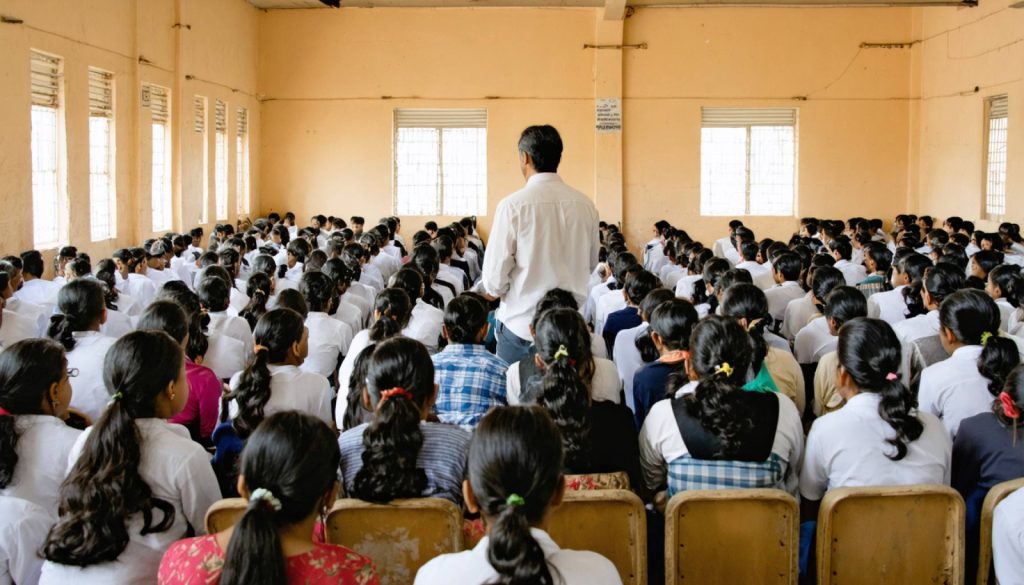
- New Delhi is at the heart of an educational debate about smartphone use in schools following a recent Delhi High Court ruling.
- The court highlights smartphones’ role in modern education but advises schools to balance technology use to avoid distractions.
- Justice Anup Jairam Bhambhani emphasizes crafting personalized policies instead of blanket bans, allowing schools flexibility in managing smartphone use.
- The Delhi Directorate of Education mandates all schools to develop their own smartphone policies by April 17, 2025.
- These policies are expected to involve input from students, parents, and educators to ensure comprehensive discussions on technology in education.
- The core challenge remains enhancing education through smartphones without compromising focus, forming the crux of this educational shift.
Two weeks post-ruling, the buzzing streets and vibrant schools of New Delhi find themselves at the epicenter of a 21st-century educational debate. The Delhi High Court’s recent decision nudges the city’s educational institutions to rethink their approach to smartphone usage among students.
Amid the clamor for innovation, the court acknowledges the undeniable role smartphones play in modern education. Advocates point to the device’s potential in expanding learning horizons with instant access to information and interactive educational tools. Others caution against its siren call—distracting students from lessons and sowing seeds of inattentiveness.
The High Court’s ruling, delivered by Justice Anup Jairam Bhambhani, challenges schools to walk the fine line between technological engagement and focus. Rather than issuing blanket edicts, the court proposes a nuanced framework. Schools hold the keys to crafting tailor-made policies, uniquely suited to their environment. Some might restrict smartphone use to specific zones, while others may opt for complete bans during critical learning periods.
The Delhi Directorate of Education has swiftly rolled out this vision, directing all schools—government-funded, partially aided, and private—to forge their own paths by April 17, 2025. The scene is set for an educational renaissance, where each school becomes an innovator, crafting policies as unique as their student body.
This evolving narrative doesn’t just touch school administrators; it ripples through dining rooms and virtual chats among parents, students, and educators alike. The policy-making process is poised to involve stakeholders at every level, ensuring inclusive discourse on the role of smartphones in education.
The takeaway? Schools in Delhi, much like ancient storytellers, are crafting their unique relationship with technology. As they pioneer these paths, one essential question underlines each decision: How can these devices enhance, rather than hinder, the pursuit of knowledge? In the cacophony of modern educational tools, striking a balance remains the core challenge, and the smartphone is the modern scroll that needs careful study.
The Future of Smartphone Use in Schools: Navigating the Delicate Balance
Understanding the Delhi High Court’s Ruling
The recent decision by the Delhi High Court regarding smartphone use in educational institutions is a groundbreaking development in promoting prudent technology use in schools. By encouraging schools to devise customized policies, the court acknowledges the multifaceted role that smartphones can play in both aiding and potentially hindering education.
How Schools Can Implement Effective Smartphone Policies
1. Engage Stakeholders:
– Involve Parents and Guardians: Schools should host meetings to gather input from parents about their expectations and concerns regarding smartphone use.
– Student Involvement: Students, the primary users, must be consulted to better understand their perspectives on how smartphones can aid their studies.
2. Trial and Feedback:
– Pilot Programs: Implement trial periods for smartphone policies to assess their effectiveness, allowing room for feedback and adjustments before finalizing rules.
3. Educator Training:
– Professional Development: Offer workshops for teachers to help them integrate technology effectively into their teaching methods.
4. Clear Usage Zones:
– Designate “tech zones” within schools where smartphone use is allowed, ensuring students have dedicated areas to leverage technology responsibly.
5. Digital Literacy Curriculum:
– Introduce courses focused on digital literacy, educating students about responsible smartphone usage, data privacy, and online safety.
Real-World Use Cases of Smartphones in Education
– Interactive Learning Tools: Apps like Kahoot! and Quizlet can make learning fun and interactive, allowing students to engage more deeply with the material.
– Virtual Field Trips: Platforms like Google Expeditions can transport students to different parts of the world, enhancing their learning experiences beyond the classroom walls.
Pros and Cons of Smartphone Use in Schools
Pros:
– Access to Information: Smartphones provide instant access to a wealth of information, aiding research and self-study.
– Collaboration Tools: Apps allow for collaborative projects and peer communication, promoting teamwork skills.
– Learning Personalization: Customizable educational apps can cater to different learning styles and paces.
Cons:
– Distractions: Social media and non-educational content can distract students from their studies.
– Equity Issues: Not all students have access to smartphones, potentially widening the digital divide.
– Cybersecurity Risks: Increased use of smartphones in education could expose students to data privacy concerns.
Industry Trends and Predictions
– Hybrid Learning Models: With the rise of e-learning, smartphones are likely to play a critical role in hybrid educational models that combine online and offline learning.
– Increased Investment in EdTech: The sector is expected to see continued growth, with investments in platforms that facilitate mobile learning projected to grow.
Recommendations for Schools
– Regularly Update Policies: As technology evolves, so should the schools’ policies regarding its use.
– Monitor and Adapt: Schools must continually assess the effectiveness of their smartphone use policies and be prepared to make necessary adjustments.
– Promote Balanced Use: Encourage students to balance their use of technology with traditional learning methods.
Conclusion
As Delhi’s schools craft their approach to smartphone usage, the central focus should remain on enhancing the educational experience. By promoting responsible use, schools can harness the benefits of technology while mitigating potential downsides.
For further insights on balancing educational technology usage, visit the Ministry of Education.



